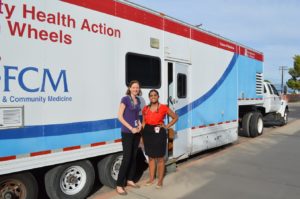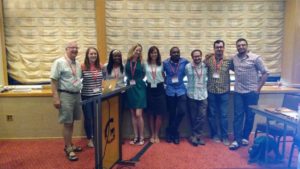The Clinician-Scientist-Educator: Why The “Jack of All Trades” is Viable and Valuable
I am a nurse practitioner, nurse scientist, and nurse educator. That means I’m typically teaching nurse practitioner students two days a week, seeing patients in family practice two days a week, and working on a clinical research project one day a week. (At least, this is the “official” breakdown. Sometimes, in the real world, these things bleed into each other, and into the rest of my life!). I am frequently asked, with some measure of incredulity, why I completed both a DNP (clinical doctorate) and PhD (research doctorate). Was I trying to delay graduation as long as possible? Am I just indecisive? There may be some truth buried in those quips, but I think there are compelling reasons to marry clinical practice, research, and teaching.
The physician-scientist is the most well-established professional role that marries science and practice (see recent popular press mentions here and here). Other clinical fields including nursing, psychology, dentistry, and physical therapy also have dual practice/research roles. Often, teaching is additionally part of an academic position, making the role even more diverse. So what’s behind the role of clinician-scientist? Why do we need these jacks-of-all trades?
I asked clinician-scientist colleagues on Twitter what the rewards are for them. Several described feelings including seeing patients is a reminder of the ultimate reason for clinical research, and seeing the ways that research findings impact patients is motivation for further discovery. One mentioned that participating in research combats the tendency to feel like a “cog in the machine” of medicine. Another noted that it keeps the day-to-day exciting to be in practice, as lab work can sometimes be lonely. And then, there’s the exposure to new ideas and methods that comes from following multiple paths.
(Thanks to @andyYchang and @AnberithaT for the feedback!)

Elizabeth teaches health professions students at the Mobile Health Program’s clinic on wheels, where she practices as a family nurse practitioner
I agree, colleagues! In addition to these personal reasons, there are philosophical reasons to take this path. One reason that speaks to me is the nature of the relationship between science and practice. The gulf between research findings and practice change is wide — some is because the research community doesn’t always do a good job disseminating findings, some is appropriate caution on the part of clinicians, and some is inertia. But part of the problem is upstream — a lot of clinical research was not designed with translation in mind, so the findings don’t seem readily applicable or there are logistical barriers to implementation. Clinician-scientists can address these problems by designing clinically relevant studies and publishing papers that speak directly to clinician’s concerns. They may also enhance research translation by serving as hubs of disseminated learning in the clinical context. (see evidence on clinician-scientists as knowledge hubs here). This brings us to the role of educator: people with research and practice expertise are excellent educators, both in clinical and academic contexts. The deep understanding that comes with immersion in both clinical and research contexts is a powerful tool for teaching. Encouraging current students to appreciate the tools of both disciplines will pay dividends in the shared future of science and healthcare.
My colleagues and I identified many reasons to pursue the clinician-scientist-educator role. Why then isn’t this the default position with everyone following this path? There are challenges. Training as a researcher and clinician takes time, and it may require intense focus in areas that are not always well aligned. The “publish or perish” mantra of academic careers is taxing to those who may dedicate a significant amount of time to clinical practice and teaching. The expected pace of productivity for a tenure-track job can seem unattainable. Likewise, the time and focus required to prepare for and lead a large research project may be out of reach for someone with an active clinical practice. While some may find it energizing to switch contexts frequently, it can be taxing for others. It can be an uphill battle, depending on your work environment, to meet the expectations of multiple roles.
On a personal note, I have faced many of these challenges myself, but I’ve found great support in places like the AHA Early Career community. While my path isn’t typical of those in my profession, I’ve been able to seek out the resources I need to succeed. While taking an unusual path isn’t always easy, it’s also deeply rewarding to be one of the only ones who does what you do.
Would you consider a career as a clinician-scientist-educator? If you’re one or the other, do you collaborate with people who have different roles and expertise?

Elizabeth with a team of early-career clinicians and scientists and mentor David Goff at the AHA 10-day seminar on the Epidemiology and Prevention of Cardiovascular Disease in Tahoe City, CA.